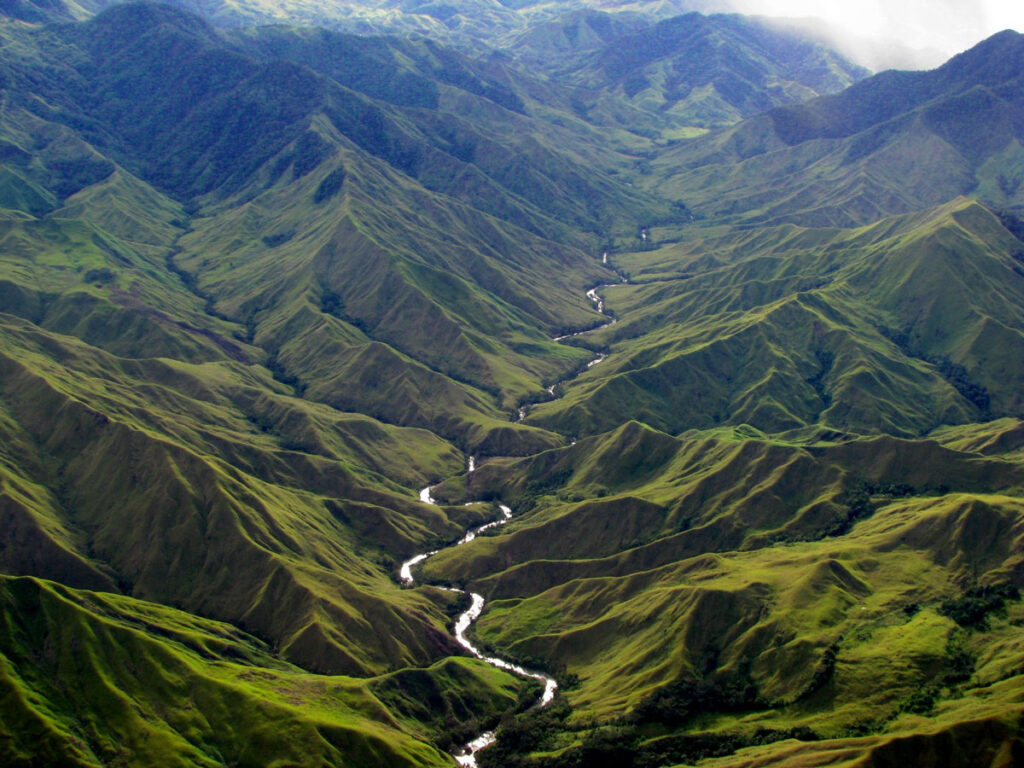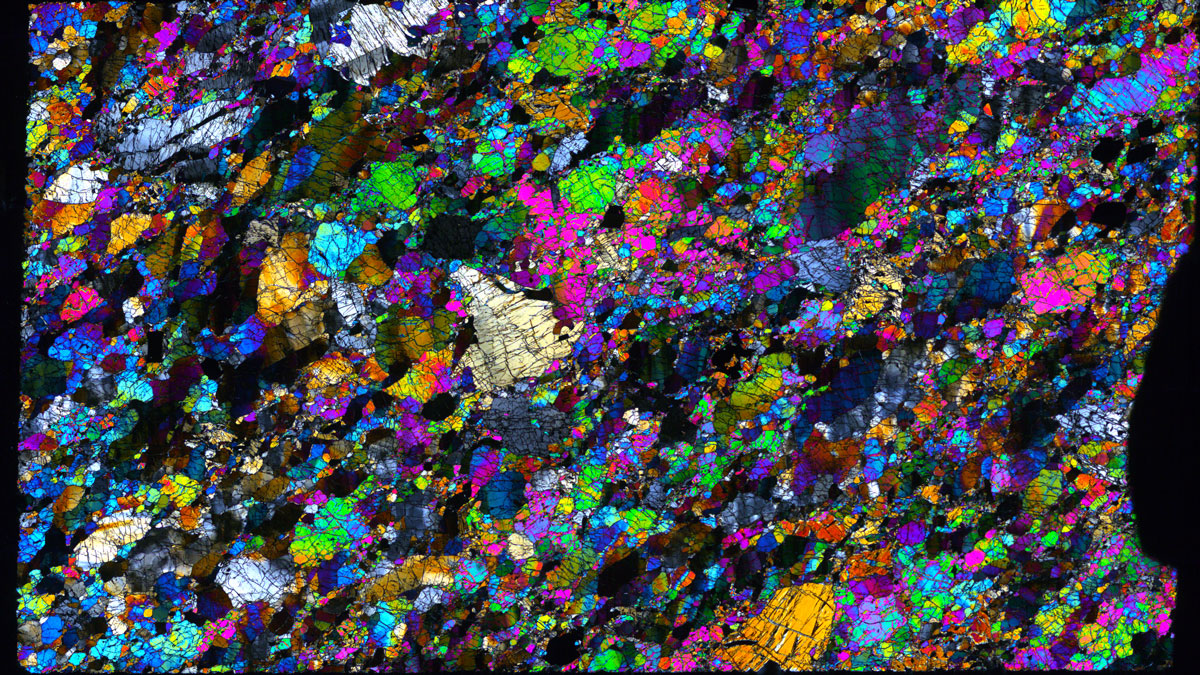As tectonic plates jostle one another, collisions can cause the bottom of the ocean to end up on land. Formerly underwater sequences of oceanic crust and mantle, called ophiolites, not only help geologists disentangle the history of how these rocks went skyward but also help them discern past exploits of Earth’s mantle.
In a recent study published in the Journal of Petrology led by Natasha Barrett while she was a doctoral student at the University of Alberta, Barrett and her team examined samples from jungle-encased ophiolites collected more than 40 years ago from Papua New Guinea, an island nation just north of Australia.
The spreading center that produced these ophiolites was likely erupting basalt seafloor between about 70 and 55 million years ago—around the time the dinosaurs died. However, scientists suspected that the ophiolites’s lowermost mantle rocks, which have strange geochemical signatures, must have come from mantle that melted eons before, likely during the Archean, between 4 and 2.5 billion years ago (when life was restricted to single-celled organisms). Barrett and her team demonstrated that the ophiolites’ lowermost mantle is instead much younger and proposed it melted in a modern subduction zone setting, forcing petrologists to rethink how these geochemical signatures developed.
Leftovers
Some scientists think that before the dinosaurs’ demise, oceanic lithosphere hanging off the northern edge of Australia plunged into the mantle, producing a trench and spreading center on the seafloor where new oceanic crust erupted. Past the proposed spreading center may have been yet another subduction zone accommodating the disappearance of the Pacific Plate into the mantle, with a string of volcanoes poking above the water. Eventually, these disparate pieces of Earth’s surface—northern Australian fragment, spreading center, and volcanic island arc—collided, with the remnants of these events preserved in parts of New Guinea.
Today, New Guinea—an island split between the countries of Indonesia and Papua New Guinea—peers above various Pacific seas. This scrap of mostly continental crust, which connects to Australia when sea level decreases, hides those ophiolites below its lush vegetation.

Unique Ophiolites
If intrepid geologists came upon a complete ophiolite, they would walk through seafloor sediments, lavas and intrusive igneous rocks of the crust, and mantle rocks called peridotites that are rich in the greenish mineral olivine. Barrett compared the lowest layer of mantle peridotite, which is what was left over after the mantle melted, to a squeezed sponge, bereft of its water (the melt, in this analogy). It is these rocks—equivalent to the wrung-out sponge—that scientists expected to be billions of years old.
“In the Archean, the mantle was hotter, so you expect to have more melting.”
In New Guinea’s ophiolites, the leftover, lowermost peridotites are unique in two ways. First, they’re especially refractory, which means they’re filled with elements, particularly magnesium, that don’t like to be in melts, said Marguerite Godard, a mantle petrologist at the French National Centre for Scientific Research who is hosted at the Université de Montpellier. Godard was not involved with this study.
Second, these rocks lack many elements already in low abundances in the mantle; these trace elements strongly prefer the melt, depleting the residue. “Highly refractory [and depleted] mantle means a lot of melting,” Godard said. To get lots of melting, scientists surmised that mantle temperature must have been high. “In the Archean, the mantle was hotter, so you expect to have more melting,” said Godard. “That’s why we expect—in the Archean—to have refractory rocks,” she explained. “Nowadays, the mantle is not so hot.”
Recent data from ophiolites near New Guinea, like those on the islands of New Caledonia and New Zealand, contain similarly curious geochemical signatures, said Godard. One possible explanation for the Oceania-wide pattern posits that mantle in this region melted billions of years ago.
Mantle Mystery
The melt extraction ages are definitely not Archean.
To figure out just when the mantle melted (leaving behind the residual rocks in her study), Barrett turned to the rhenium-osmium geochronologic system. Radioactive rhenium decays to osmium. Rhenium strongly prefers the melt, whereas osmium stays behind. Once the rhenium goes away via the melt, the residual rock’s osmium signature is locked in. That signature corresponds to the age at which the melt parted ways with the peridotite in question.
The osmium signatures Barrett found are much higher than those observed for Archean peridotites, which have similarly weird geochemistry. On the basis of these data, the melt extraction ages of the rocks in her study are not Archean, she said. Instead, the mantle below New Guinea melted sometime in the recent past, although being more specific than the Phanerozoic isn’t possible without additional study, she added.
Because the melt extraction happened when the mantle was no longer as hot as it was during the Archean, “you have to find a mechanism” to so immensely deplete the residual peridotites, said Godard. Barrett and her colleagues proposed that this complicated subduction zone setting created these bizarre geochemical signatures in two stages. The first stage involved melting. The second involved multiple processes in which more melting was aided by either water, basalt from deeper below, or something else liberated from the subducting slab underneath the spreading center. Like adding salt to ice in the winter to lower its melting point, these additions to the mantle above the subducting slab would facilitate the second stage of melting.
“They are definitely the most refractory and depleted peridotite I have ever, never seen,” said Godard, referencing that these rocks are not well studied in part because they’re difficult to get to. “The mystery is why,” she said. Barrett’s proposed second stage of melting, she explained, “is extremely important in the system to produce those very refractory…and depleted compositions.”
—Alka Tripathy-Lang (@DrAlkaTrip), Science Writer

